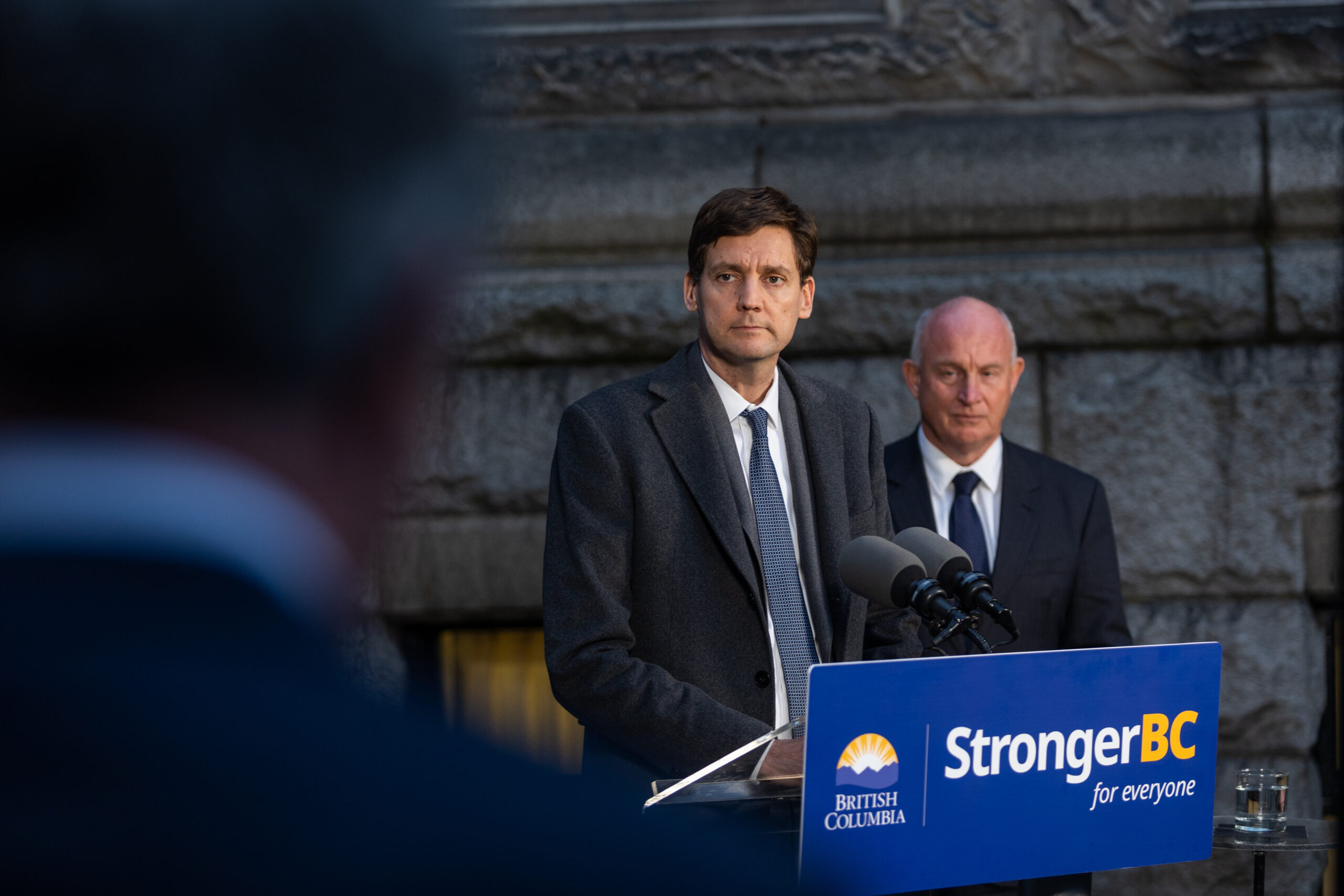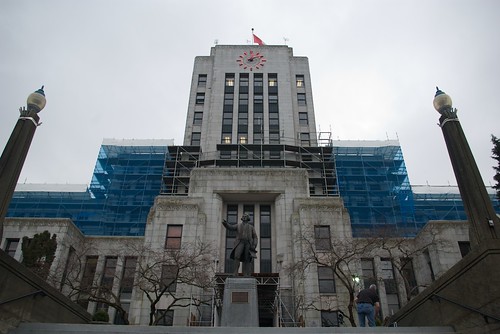This month City Hall passed a policy on upzoning the full length of Cambie Street, thereby lining the pockets of developers and speculators. This was no easy task: it required that the Planning Department devise and implement a ‘consultation’ strategy to preempt, co-opt and neutralize resident organizations.
There are many reasons residents might oppose top-down free-market gentrification of their neighbourhoods. Some will be shaded out, some priced-out, while others are faced with more complicated dilemmas. For example, when a bungalow is upzoned to accommodate 12-storey towers, the land value multiplies, but so too do the property taxes, leaving the owner no option but to sell-out to developers trying to consolidate lots. While some home-owners may have legal recourse, residential or commercial tenants have no hope.
Planning has progressed slightly since 19th century Paris, where the younger Napoleon would send in the army to secure and build proto-planner Baron Haussmann’s corridors without a modicum of commune consultation. Today Gregor sends in Toderian to consult corridor residents and secure community buy-in – a useful stamp of approval. To this end, City Planning collaborated with concerned residents to form the Riley Park South Cambie (RPSC) Visions Group, which began consulting area residents about their aspirations and concerns.
However, it turned out that Vision Vancouver was not interested in the visions of this ‘Visions group’, as the visions were pre-determined. Norm Dooley, one of the most active members of the RPSC told The Mainlander: “The Stage 2 process started with a pre-determined set of outcomes and did not vary significantly from its stated goals. There was no room for alternative ideas.”
The City supported the RPSC Vision Group so long as it funneled information in one direction – from the City to residents. But once RPSC began collecting feedback, criticisms, or (heaven forbid) visions, the City was less supportive. According to Norm Dooley:
The opening stage of public meetings that provided information was straight forward enough, but the Riley Park South Cambie Visions Group had to exert pressure to be allowed a presence at those sessions with our information on the larger picture of growth in the immediate area beyond the strict physical definition of the Cambie Corridor (Heather to Manitoba Streets). This made it seem that the Planning Department did not want the public to grasp just how much change our area is in for.
Also, there never was a response from Planning to the public’s input at the two public meetings that were held in our area. In short, Planning collected the ideas and positions of the local community but did not return to say what they had learned and how they planned to use the public’s input. In fact, they ignored nearly all of the public’s concerns about very high buildings and stayed with their original plans.
When asked to what extent the consultation was meaningful, Dooley told The Mainlander:
Not sufficiently. There needed to be greater recognition of the values and concerns of local residents, but that was not provided. There was minimum cooperation on those concerns, no community consensus building and a distinct disregard for compromise.
In fact, the inability to advocate on behalf of residents was extremely frustrating for Dooley:
We tried to work with Planning and urged lower condominium building heights on behalf of local residents (those adjoining 25th and 41st Avenues) and lower condos adjacent to and across from Queen Elizabeth Park on Cambie. We were unable to move Planning at all and I feel as if the RPSC was misused in its role as the City of Vancouver-sanctioned public group. We sought in good faith not to have the most dramatic of the proposed changes inflicted on residents living near the stations, but got nothing for those residents; neither were we successful in protecting Cambie Boulevard and Queen Elizabeth Park from encroachment of over-size buildings.
Conclusions
The City’s first error, then, was its failure to empower residents to forge their own destiny. Despite progressing beyond the consultation process of 1870s Paris, we have regressed significantly from 1990, when COPE’s campaign slogan called for “A New Era of Participatory Neighbourhood Planning in Vancouver.”
The City’s second error was to leave the false impression that residents would have a say on matters of consequence. It is a key planning principle to be honest about the (lack of) influence residents are to be afforded.
There are important lessons to learn from this story. Other neighbourhood organizations throughout the City are currently dancing with the City, contemplating a partnership on neighbourhood visioning, such as the West End Mayor’s Advisory Committee and the DTES Local Area Planning Committee. These groups might take heed of Norm Dooley’s “take-home-message”:
Residents have to challenge Planning’s definition of the “problem” and proposed solutions at the start rather than expect that they can modify them along the way. It would have been better to go to the public media at the outset and explain that we would not participate in the process because Phase 2 had predetermined outcomes.
For its part, the City Council should also take heed that neighbourhoods across Vancouver are losing faith in the democratic process, and that a resident-based movement aimed at replacing the current parties and their councilors is all but inevitable.
















Joseph Jones
May 31, 2011 at 10:29 pm
Norm Dooley’s trenchant conclusion — that participation is useless — is corroborated by the Norquay experience of 2004-2010.
The developer-politician-planner axis counts on manipulating the hopes and rationality and decency of ordinary Vancouver residents to continue generating a simulacrum of working together … working together to realize their predetermined one-sided agenda!
Do not believe these people. Do not waste your time and energy. Just say NO.
Tessa
July 5, 2011 at 12:24 am
While I can’t and don’t wish to diminish the weight of Mr. Dooley’s experience nor to argue the public engagement process was neccessarily all that participatory, I highly disagree with the implications from your characterization of the plan as being top-down free-market gentrification, in particular the idea that this plan is only going to impoverish poor old West Side homeowners and line the pockets of the rich. Without new density, housing affordability and high prices only gets far worse for everybody, and that includes the currently cheaper East Side, where gentrification is creeping ever so consistently. Without new homes, there’s no way poor people are ever going to live anywhere but a basement suite. And huge towers is hardly the way to do that outside of downtown (most of the corridor will be four-six stories, keeping a much better community feel).
As for homeowners, yes, they may end up moving thanks to upzoning. Yeah, they might lose their rancher on a big lot so other people can have a home in Vancouver, too. I know, it sucks to have to move out of somewhere you’ve lived for a long time, but their bank accounts will hardly suffer.
The problem here isn’t the density, it isn’t the shape or form, it’s how that form is done: whether it’s shwanky condos with million-dollar townhouses, each with their own expensive underground parking spot, or affordable rentals and cooperative housing. That’s the important question, and the one unfortunately that gets lost in all this misguided discussion about density.
Anita Romaniuik
July 5, 2011 at 11:48 pm
Density does nothing to make housing affordable. I live in the Cambie neighbourhood, where new townhouses sell for $900,000, and heaven forbid you even THINK about finding a detached house, even an older unrenovated model of a detached house, for under $1 million. How in the world is a low income or even average income person going to afford even a 1 bedroom condo??? They’re not!!!! I only live here because we bought our house 23 years ago.
Over on Main St at 33rd Ave, a new but basic 3-story condo building is going up. There used to be a sign saying “1 Bedroom Starting at $294,000”. It’s sold out. Yup, there you are, over on Main St, $300,000 is CHEAP!!! And that’s just a 3 story apartment style building that’s still being built, mind you. What, you can’t afford $300,000?!
Bring back co-operative housing. That made a LOT of people homeowners back in the 1970’s and 1980’s who couldn’t afford it otherwise. Too bad successive Liberal and Conservative federal governments abandoned co-ops. It’s the only thing that’s going to bring affordable housing back to Vancouver. That, and maybe doing something about the numerous new housing units that are held as part of someone’s “investment”, where the owner might not even live here in Vancouver.
The only other alternative I can think of (besides the aforementioned basement suites) is lane houses. They are legal now, which is good, but legally they can only be rented. You can’t buy them. You’re still a tenant.
Anita Romaniuk
July 5, 2011 at 11:51 pm
Post lost price of average new condo in Cambie, which is about $600,000 based on the real estate pamphlets that end up in my mailbox. Also I mispelled my own surname. Ooooops!
Anita Romaniuk
July 5, 2011 at 11:56 pm
Another federal program that helped make housing more affordable for TENANTS in the 1970’s was a tax credit to build rental housing (mostly apartments). That, too, was dropped by the federal government, in the 1980’s, I think. Unfortunately the Conservative government we have today isn’t so inclined.
Richard
October 22, 2011 at 10:26 pm
tessa: do you realize, or care, how much you sound like a self-entitleed snot ?